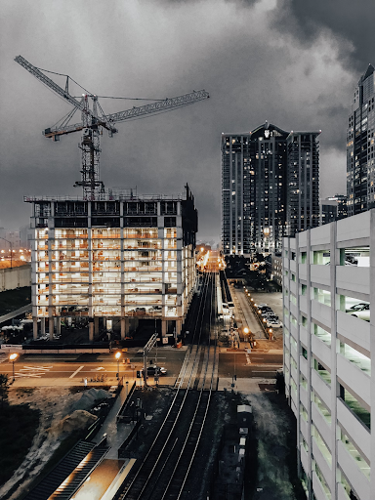In the landscape of modern construction, the continuous progress in technology is drastically redefining what it means to build with efficiency, comfort, and sustainability in mind. Among the plethora of innovations reshaping the industry, thermostatic control technology emerges as a beacon of progress, offering a myriad of significant benefits that align perfectly with the increasing demand for smarter, more energy-efficient buildings. This detailed post ventures deep into the realm of thermostatic control, meticulously exploring its profound impact on the construction industry through six thoughtfully curated perspectives. Each angle provides a comprehensive look at how this technology not only enhances current construction practices but also paves the way for future developments in building smarter, more responsive environments.

1. Enhanced Energy Efficiency
One of the most compelling arguments for integrating thermostatic control technology into modern construction is its potential for energy savings. Quality systems, like the one from Deslauriers, allow for precise temperature management in different zones of a building, reducing unnecessary heating or cooling. By adapting to the specific needs of each space and making adjustments based on occupancy and time of day, thermostatic controls minimize energy consumption without compromising comfort. This not only results in lower utility bills but also contributes to a building's overall energy efficiency—a key factor in achieving green certification standards like LEED and BREEAM.
2. Improved Occupant Comfort
Comfort in the built environment significantly influences occupant satisfaction and productivity. Thermostatic control technology elevates this aspect by maintaining optimal temperature settings tailored to individual preferences and external weather conditions. This adaptability ensures that every room or zone within a building provides a comfortable setting, enhancing the well-being of its occupants. Whether it's a residential space adjusting for nighttime temperatures or an office maintaining a consistent climate throughout the workday, the result is a more livable, enjoyable environment.
3. Operability and Ease of Use
Modern thermostatic controls boast intuitive interfaces and automation capabilities, making them remarkably user-friendly. Gone are the days of complex manual adjustments; today's systems can be easily programmed and monitored via smartphones or tablets, providing users with unparalleled control over their environment. This ease of operation not only simplifies facility management but also empowers individuals to take an active role in their comfort and energy consumption, fostering a more conscious approach to environmental stewardship.
4. Long-Term Cost Savings
Thermostatic control technology may require a higher initial investment compared to traditional HVAC systems, but the long-term financial benefits are substantial. By optimizing energy usage and reducing strain on heating and cooling systems, these controls can lead to significant savings in maintenance and operational costs over time. This optimization not only extends the lifespan of HVAC equipment but also reduces the frequency of repairs and replacements, saving money on both fronts. Additionally, as energy prices continue to escalate, the return on investment for thermostatic controls becomes increasingly appealing. This makes them an economically wise choice for both new constructions and renovation projects alike, as the savings accrued over the lifespan of the building can far outweigh the upfront costs.
5. Sustainability and Environmental Impact
In today's global landscape, sustainability has become a paramount consideration in construction projects. Thermostatic control technology directly contributes to this agenda by bolstering a building's energy efficiency and diminishing its carbon footprint. By utilizing less energy for heating and cooling purposes, buildings emit fewer greenhouse gases, thus playing a crucial role in the fight against climate change. This alignment with environmental objectives not only benefits the planet but also resonates with the burgeoning population of environmentally conscious consumers and tenants. Buildings equipped with thermostatic controls not only reduce their environmental impact but also appeal to stakeholders who prioritize sustainability, thus enhancing their marketability and value.
6. Future-Proofing Construction Projects
Integrating thermostatic control technology into construction projects represents a forward-thinking strategy that insulates buildings against evolving standards and expectations. As regulations governing energy efficiency become more stringent and tenants' preferences for smart, responsive environments grow, the inclusion of these systems becomes imperative. Moreover, with the rise of the Internet of Things (IoT) and its integration capabilities, thermostatic controls can seamlessly connect with other smart building technologies. This connectivity opens doors to further innovations in energy management and occupant comfort. By embracing thermostatic controls, construction projects position themselves at the forefront of technological advancements, ensuring their relevance and competitiveness in the ever-changing landscape of the built environment.
7. Integration with Building Automation Systems
Thermostatic control technology's compatibility with building automation systems marks a significant advancement in construction practices. These systems enable seamless integration of thermostatic controls with other building management functions, such as lighting, security, and occupancy sensing. By centralizing control and monitoring through a unified platform, building operators gain unprecedented insight into energy usage and occupant behavior, allowing for more informed decision-making and optimization strategies. This synergy between thermostatic controls and automation systems not only streamlines facility management but also maximizes efficiency and responsiveness, ultimately enhancing the overall performance of the building.
8. Adaptability to Diverse Architectural Designs
One of the notable strengths of thermostatic control technology lies in its versatility and adaptability to diverse architectural designs and building types. Whether it's a sprawling commercial complex, a high-rise residential tower, or a compact urban office space, thermostatic controls can be tailored to suit the specific requirements and challenges of each structure. This flexibility extends to both new constructions and retrofit projects, enabling architects and engineers to integrate energy-efficient climate control solutions seamlessly. As the architectural landscape continues to evolve with innovative designs and construction methods, thermostatic control technology stands ready to complement and enhance these endeavors, ensuring that buildings of all shapes and sizes can realize their full potential in terms of efficiency, comfort, and sustainability.

The thermostatic control technology is more than just a trend in modern construction; it's a fundamental shift towards smarter, more sustainable building practices. Its impact extends beyond immediate energy savings, touching on crucial aspects like occupant comfort, operational efficiency, and environmental responsibility. As the construction industry continues to evolve, the adoption of thermostatic controls will undoubtedly play a pivotal role in shaping the future of our built environment, making it more adaptable, efficient, and in harmony with the world around us.



(0) comments
We welcome your comments
Log In
Post a comment as Guest
Keep it Clean. Please avoid obscene, vulgar, lewd, racist or sexually-oriented language.
PLEASE TURN OFF YOUR CAPS LOCK.
Don't Threaten. Threats of harming another person will not be tolerated.
Be Truthful. Don't knowingly lie about anyone or anything.
Be Nice. No racism, sexism or any sort of -ism that is degrading to another person.
Be Proactive. Use the 'Report' link on each comment to let us know of abusive posts.
Share with Us. We'd love to hear eyewitness accounts, the history behind an article.